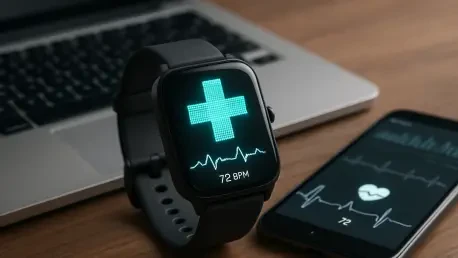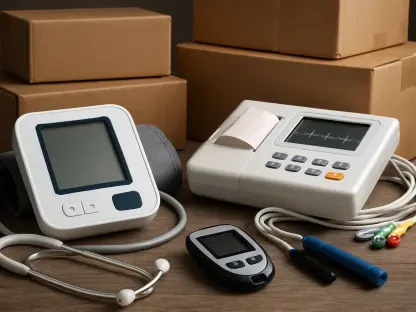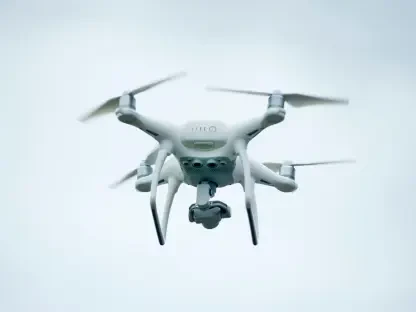As the world continues on a trajectory toward constant connectivity and enhanced personal health monitoring, wearable system-on-chip (SoC) technologies are emerging as significant forces driving change in multiple facets of our lives. While the notion of these miniature yet potent chips isn’t new, recent advancements and forecasted growth between now and 2032 indicate a pivotal period for their impact on both consumer electronics and health-oriented devices. These chips, by integrating key functionalities like processing power and wireless communications in compact forms, enable a host of new applications and are poised to transform the tech landscape in unimaginable ways.
The Core Components of Wearable Device SoCs
Integration and Efficiency
Central to the wearable SoC market is the remarkable capability of these chips to amalgamate various essential functions into a single, efficient package. At the heart of this integration lies the consolidation of processing power, memory, sensors, and communication capabilities such as Bluetooth and Wi-Fi—all in an ultra-compact, power-efficient design. By marrying these elements into one chip, manufacturers can create devices that are as functional as they are stylish and unobtrusive. The allure of wearables, whether they are health monitors or smart glasses, often hinges on their ability to operate for extended periods without frequent charging or loss of efficacy.
This emphasis on efficiency has catalyzed a race among tech giants and startups alike to push the boundaries of chip design. Enabled by advancements in semiconductor technology and material science, the latest iterations of SoCs offer unprecedented power-to-size ratios. In particular, notable players such as Qualcomm and Ambiq Micro are leading this charge, striving to create SoCs that are not only faster and smaller but also able to carry out increasingly intricate tasks. As the need for multifunctional devices grows, the impetus is on the industry to sustain this momentum while ensuring that power consumption remains as low as possible to cater to consumer demands for longer battery life.
Advancements in Chip Technology
The relentless pursuit of innovation in chip design is a testament to the dynamic nature of the wearable SoC market. With developments in artificial intelligence (AI) and machine learning (ML) creating new possibilities, these chips are no longer just about reducing size or boosting speed. There’s a concerted effort to embed capabilities that allow for complex task executions, paving the way for devices that can process data in real-time and make intelligent decisions. AI and ML, in particular, are game-changers—enabling functionalities like predictive health analytics or adaptive learning mechanisms in wearables.
Companies are now investing heavily in research and development to refine these capabilities further, resulting in SoCs that not only improve device performance but also offer enhanced security protocols—a crucial aspect when dealing with sensitive health data. As this trend continues, it becomes clear that the integration of smart processing capabilities into wearables could revolutionize end-user experiences, making tasks more intuitive and personalized than ever before. These advancements highlight the need for collaboration across the tech landscape, involving everything from AI specialists to health professionals, to ensure that wearables are not only innovative but also socially responsible and beneficial.
Market Dynamics and Trends
Health and Connectivity Demand
The growing consumer focus on health and connectivity is a principal driver behind the projected expansion of the wearable SoC market. As individuals become more health-conscious, there is a burgeoning demand for devices that offer comprehensive health monitoring, such as tracking heart rates and analyzing sleep patterns. This shift is not isolated to one segment but spans across general wellness and specific medical conditions where continuous monitoring is beneficial. SoCs facilitate these needs by powering devices that deliver real-time data and insights, empowering users to take charge of their health proactively.
Simultaneously, the digital transformation of lifestyles sees an uptick in Zigbee, 5G, and other connectivity advancements. Wearable devices are becoming integral nodes within the broader Internet of Things (IoT) ecosystem. This interconnectivity allows seamless communication between devices, making homes smarter and daily routines more synchronized. The role of wearable SoCs in this framework is crucial, ensuring that these devices can transmit and receive data efficiently without interruptions, thereby enhancing the quality of life through better connectivity solutions. As lifestyles evolve, it appears evident that wearables, powered by advanced SoCs, will continue to be front-runners in bridging health and technology seamlessly.
Regional Market Influences
The diversification and growth of the wearable SoC market are also significantly influenced by regional dynamics. In North America, for instance, the adoption rates of high-end wearables like smartwatches and fitness trackers are exceptional, thanks in part to the country’s tech-savvy population and advanced healthcare infrastructure. These factors combine to create a fertile ground for the proliferation and advancement of SoC technologies as they cater to ever-growing consumer expectations for innovation and reliability in wearables. In stark contrast, the Asia Pacific region represents a burgeoning market characterized by robust production capacities and vast consumer bases in countries such as China and Japan.
Here, the focus is on affordability and accessibility, allowing the technological benefits of wearables to permeate varied demographic segments, ranging from tech aficionados to health-conscious individuals in emerging economies. The affordability factor, coupled with continual enhancements in smartphone connectivity, particularly excites interest in South America and the Middle East & Africa regions. These markets are witnessing a surge in demand for wearables that offer innovative capabilities at competitive price points. Understanding these regional intricacies provides companies with the insights necessary to tailor their strategies and product offerings, ensuring inclusivity and broad accessibility to wearable technologies.
New Applications and Opportunities
Expanding Use Cases
The versatility of wearable devices, fueled by advancements in SoC technology, has expanded their application possibilities beyond traditional health and fitness realms. The realm of mobile payments, for instance, is becoming increasingly reliant on wearables equipped with secure SoCs capable of handling transaction protocols with enhanced security features. By enabling swift and easy payment solutions through a simple smartwatch tap, these devices are slowly carving a niche in the world of financial technology. Similarly, SoCs are proving their value in enterprise productivity solutions, as businesses seek ways to enhance employee connectivity and efficiency through wearable technology.
Furthermore, cutting-edge applications in fields like remote patient monitoring and augmented reality (AR) offer new dimensions for wearables, empowering healthcare providers with tools for accurate data collection and patients with innovative avenues for engagement. The ability of SoCs to handle these advanced tasks without compromising device usability underscores their role as enablers of digital transformation across industries. This trend sets the stage for further exploration and innovation, underscoring the potential for novel applications that challenge the very boundaries of what wearables can achieve and their implications for personal and professional spheres.
Market Segmentation Insights
Market segmentation within the wearable SoC landscape provides insights into product diversity and customer preferences that are critical for future success. Differentiations based on SoC type, functionality, processor architecture, and packaging have emerged to cater to distinct user demands and operational contexts. General-purpose SoCs, AI-enabled SoCs, and ultra-low-power SoCs offer varied functionalities ranging from sophisticated data processing to basic security, highlighting the adaptability of SoC technologies to meet consumer expectations. Processor architectures such as ARM Cortex, RISC-V, and custom designs emphasize maximized performance and minimal latency, ensuring that these components are apt for diverse deployment scenarios.
Packaging advancements like wafer-level scale packages and flip-chip BGA play a crucial role in enhancing device durability and scalability. These factors are increasingly significant in guiding strategic decisions for developers and manufacturers, as the quest for next-generation wearable solutions continues. By analyzing these facets, it becomes apparent that the wearable SoC market space could serve as a cornerstone for substantial technological evolution, leading to a future where personalized, intelligent devices become central to everyday living experiences.
The Path Forward
As the world progresses toward a future of continuous connectivity and enhanced health monitoring, wearable system-on-chip (SoC) technologies are becoming critical elements driving transformation in multiple areas of our lives. Although the concept of these small yet powerful chips isn’t new, the latest innovations and projected growth from now until 2032 highlight a significant time for their impact on both consumer electronics and health-centric devices. These wearable SoCs integrate essential features, such as processing power and wireless communication capabilities, into compact forms, paving the way for a multitude of new applications. From monitoring vital health statistics to providing seamless connectivity with other devices, these chips are poised to revolutionize technology, impacting how we interact with our gadgets and manage our health. Their potential to redefine the boundaries of tech innovation places them at the forefront of shaping our future lives, influencing sectors beyond consumer electronics to healthcare and beyond.









